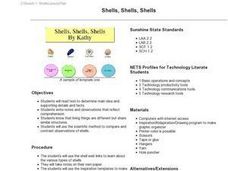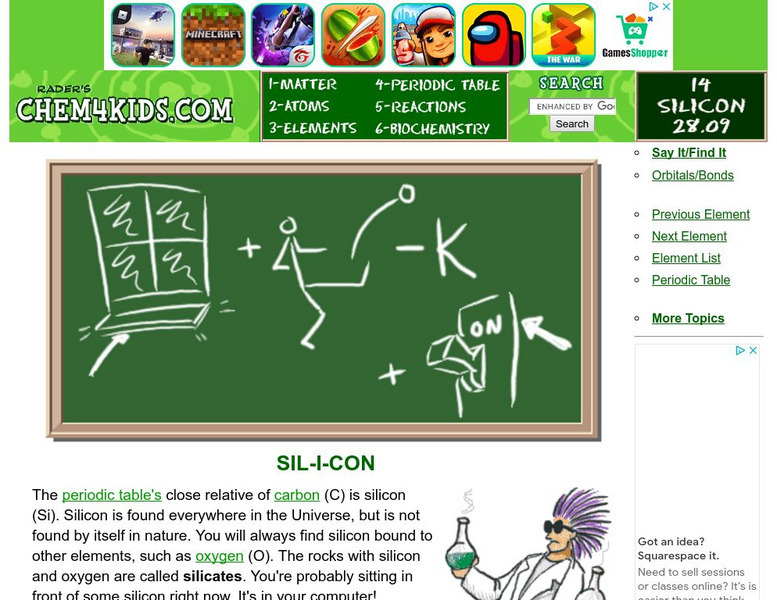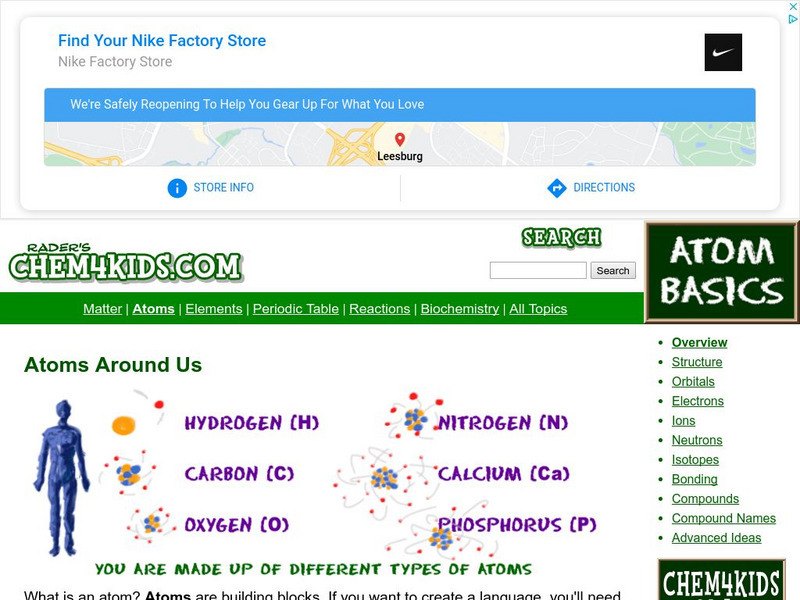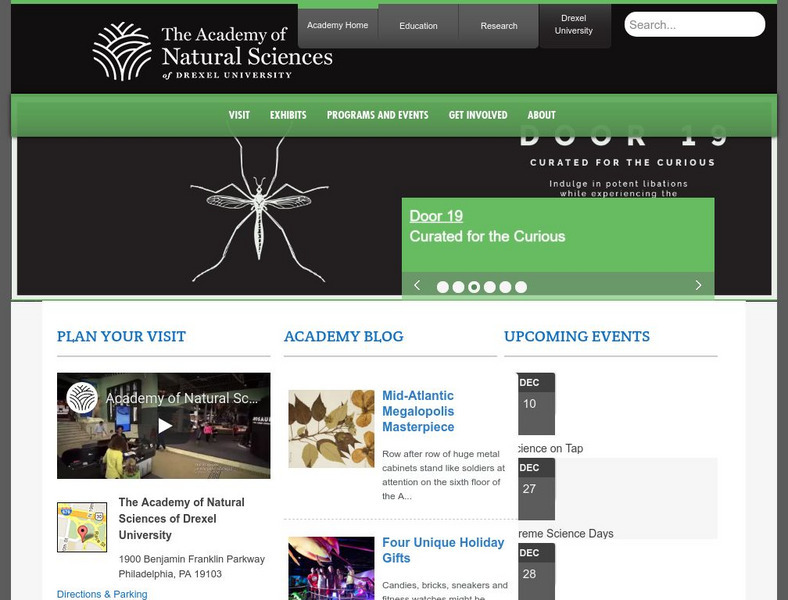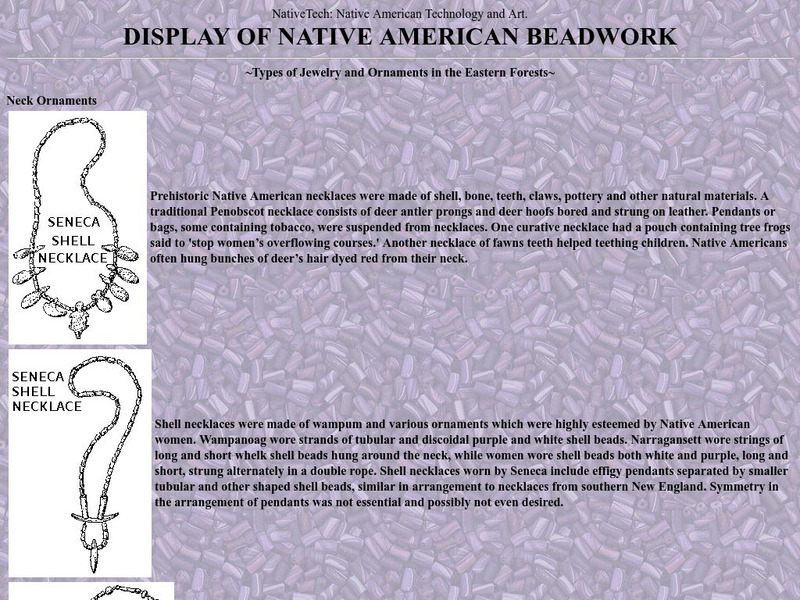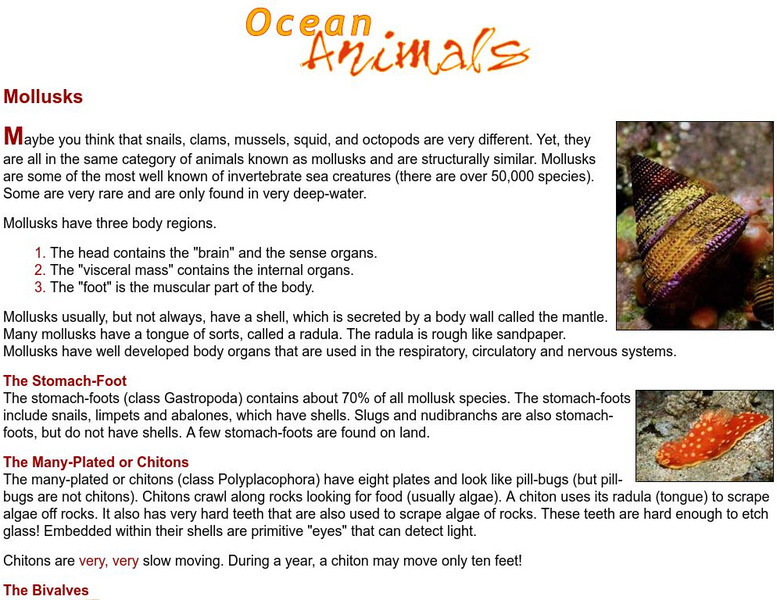Curated OER
Word Search: Common Seashells
Here is a wordsearch on common seashells. There are 25 shell words that have to be found in the search. Each one has a colorful and accurate picture on the worksheet. An answer key is included.
Curated OER
Classifying Shells
Students observe and classify different types of shells. They compare and contrast an exhibit they created with one that already exists in a musuem. They discover the different characteristics of shells.
Curated OER
Beach Life: Spanish Banks Field Trip
Students discover beach life. In this beach life activity, students visit a beach to find plant and animal species that live there. They discuss the life cycle and needs of some of these animals through a variety of activities.
Curated OER
Mollusk Matching
Young scholars look carefully at shells and observe the differences between
species and the names of common shells. Then they identify and complete a Mollusk Matching handout included in the lesson and write the letter of each shell in...
Curated OER
What Lives In A Shell?
Younger students focus on animals and animal habitats in the lower grades. This resource defining habitats focuses on sea animals with shells, but could be augmented to be a richer experience.
Curated OER
Features of Shells
Students create a new shell. In this shell features lesson, students different types of shells, discuss their special features and talk about how animals use shells. Students use the Internet to research information on shells...
Curated OER
Shells Around the World
Students research a geographical region that contains shells. In this shells from around the world lesson, students take a field trip to a local shell shop (if possible) and then work in groups to research a geographical region...
Scholastic
A House for Hermit Crab
Engage young marine biologists in a reading of Eric Carle's A House for Hermit Crab with a fun hands-on activity. Given a set of clipart images of the different aquatic animals that appear in the book, children identify each one...
Curated OER
Seashore Invertebrates
In this science worksheet, students locate the names of 20 seashore invertebrates in a word search puzzle. Each word in the word bank has a detailed color illustration.
Curated OER
Common Shells Word Search Worksheet
In this word search worksheet, learners locate the names of 22 common sea shells. They use the pictures and names of the shells that are shown on the page to solve the puzzle.
Curated OER
Multiplying in Any Order
In this mathematics worksheet, 2nd graders use counters to show an array. Then they write the multiplication fact for that array. Students also identify if the reverse of a multiplication fact is equal and explain why.
Curated OER
Shells and Subshells
Students explore how to show evidence of subshells and electron filling on the visual scale. They examine subshell filling and evaluate unknowns based on the atomic emission spectrum. Students design an experiment to identify colors of...
Curated OER
Shells, Shells, Shells
Young scholars read text to determine main idea and supporting details and facts. They use the shell web links to inquire about the various types of shells. Students use Inspiration templates to make a mobile about shells.
Curated OER
Three Dimensional Art of Vertebrates and Invertebrates
Students, during this twelve week series of lessons, learn basic anatomy through life sketches of human skeletons and shells. They learn fundamentals of line and convey life through sketches learning science through art.
Science Buddies
Science Buddies: Swimming in Acid: Understanding Ocean Acidification
The oceans are a precious natural resource, part of Earth's carbon cycle. But what happens if the oceans absorb too much carbon dioxide? Many scientists are concerned that the increased absorption of carbon dioxide is causing them to...
Other
Civil War Artillery Projectiles: Field Artillery Projectiles
A wealth of information about the projectiles used in artillery in both the North and the South. Included are pictures, cross-sections, and descriptions of the various types of projectiles.
Chem4kids
Chem4 Kids: Silicon (Si)
Here you can find some great information about the 14th element in the periodic table, "silicon." Content focuses on silicon's electrons, where you can find silicon in nature and in the home, and how silicon combines with other elements.
Chem4kids
Chem4 Kids: Phosphorus (P)
Here you can find some great information about the 15th element in the periodic table, "phosphorus." Content focuses on phosphorus' electrons, where you can find phosphorus in nature and in the home, and how phosphorus combines with...
Chem4kids
Chem4 Kids: Atoms
This site provides a detailed overview of atoms. Content explores an atom's structure, as well as what ions are, how atoms bond, what compounds are (including how to name compounds), and what isotopes are.
Other
The Academy of Natural Sciences
This site describes the museum. It shows the viewer what is currently on exhibit, interesting facts, and many links to other exhibits.
Hartford Web Publishing
World History Archives: Hartford Web Publishing: The Significance of Wampum
This site contains information about the term Wampum and its significance. Also contains information about Native Americans collecting shells and their worth to the tribe.
Native American Art and Technology
Native Tech: Native American Beadwork: Display of Native American Beadwork
The Northeast Woodland Indians used many different materials to make their jewelry. Read about the materials, how they were used, and see pictures of different kinds of jewelry.
Missouri Botanical Garden
Missouri Botanical Garden: Ocean Animals: Mollusks
The Missouri Botanical Garden describes the characteristics and natural history of mollusks in text and color photography.
Read Works
Read Works: A Shell Is Great for Protection
[Free Registration/Login Required] This nonfiction passage shares information about the topic of shells. This passage is a stand-alone curricular piece that reinforces essential reading skills and strategies and establishes scaffolding...














